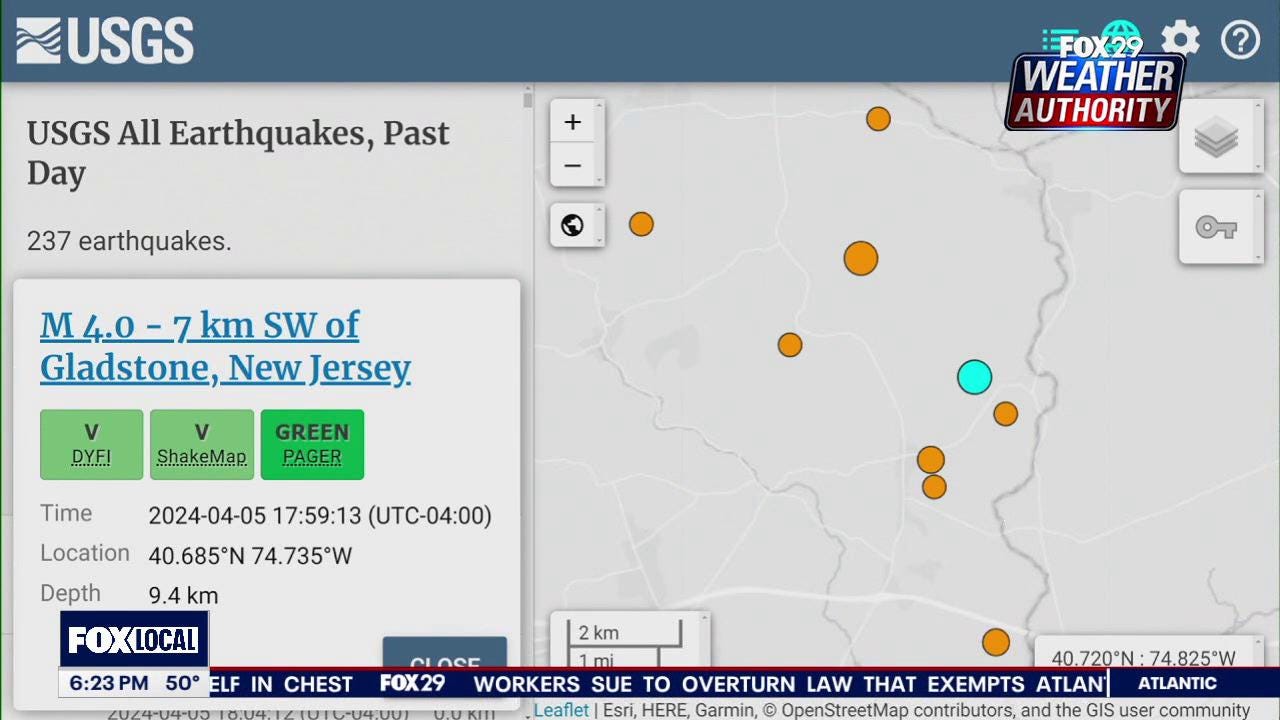A small quake just shook Virginia. How rare are East Coast earthquakes?

A small earthquake that startled residents near Richmond, Virginia, this week is a reminder that the East Coast is not exempt from the dangers of temblors.
The 2.8 quake hit about 6 miles northwest of Glen Allen, Virginia, and about 13 miles northwest of the state's capital on Tuesday just before 5:30 p.m. EST, according to the U.S. Geological Survey. Residents in Richmond and Henrico County felt the shaking, according to local outlet WTVR. No damage or injuries were reported.
In 2011, an earthquake near Mineral, Virginia, about 50 miles from Richmond, became the most widely felt earthquake in U.S. history, the USGS said. The Aug. 23 quake caused more than $200 million in damage, including to the Washington Monument and National Cathedral in the nation's capital.
At a magnitude of 5.8, it wasn't among the strongest earthquakes to hit in the country, but the unique geographical makeup of the East Coast meant it was felt much farther and wider than the more common West Coast quakes.
Are East Coast earthquakes rare?
Earthquakes are much less frequent in the eastern part of the country than in the west, but they have been documented in every state east of the Mississippi River, according to the U.S. Nearly all eastern states have seen large enough quakes to cause damage at one time or another.
Annually, seismologists clock about 900,000 earthquakes worldwide, but the vast majority happen along plate boundaries not found in the eastern and midwestern U.S., according to Michigan Technological University's Department of Geological and Mining Engineering and Sciences.
Every so often, small to moderate quakes surprise the East Coast in states such as New York and New Jersey.
Strong quakes have hit in the East before, and documentation even from temblors hundreds of years ago allow us to estimate their magnitude. In November 1775, a 6.0 quake 50 miles outside of Boston caused serious damage in the city. An 1886 earthquake in Charleston, South Carolina, that was 6.8 to 7.2 in magnitude damaged or destroyed much of the city.
The 2011 Virginia earthquake triggered landslides 150 miles away and sent damaging tremors four times farther and over an area 20 times larger than ever recorded before, the USGS said in a report the next year.
Why quakes are felt differently in the East
Though they're usually not as high in magnitude as quakes in states such as California, earthquakes in the East can actually be more concerning because they can affect a larger area than earthquakes of the same magnitudes in the West, according to the USGS.
That's because rocks in the eastern part of the country are much older, in some cases by millions of years. Older rocks have been exposed to more extreme temperatures and pressure, and faults have had more time to heal, making them harder and denser, so seismic waves travel across them more efficiently. In the West, faults are newer and absorb more of the seismic wave energy is absorbed and doesn't spread as far.
The 2011 Virginia quake was felt by millions of people. There were about 4,000 aftershocks from that quake that continued even a decade later, according to USGS.
East Coast earthquakes also cause "higher-frequency shaking (fast back-and-forth motion) compared to similar events in the West," the USGS said.
“Damaging earthquakes do not strike the eastern U.S. often, but the potential consequences of not understanding and planning for such events with their widely distributed shaking could be severe," USGS Director David Applegate said in 2021. "The next significant earthquake on an eastern U.S. fault may not occur for hundreds of years, yet there is a small chance it could happen at any time.”
Contributing: Gabe Hauari, Paste BN